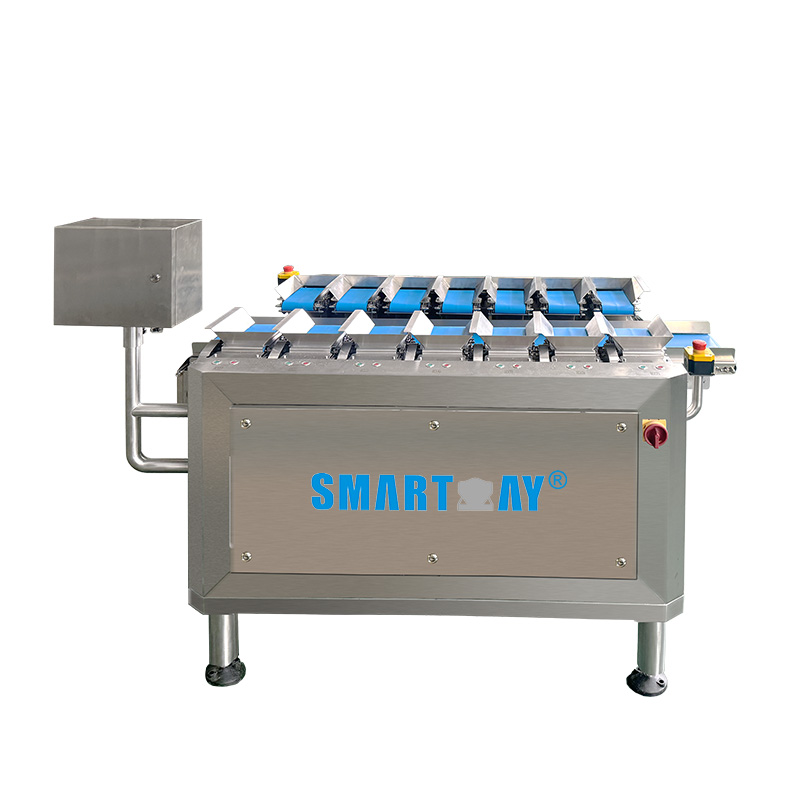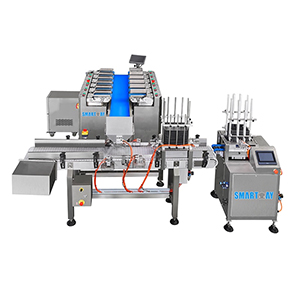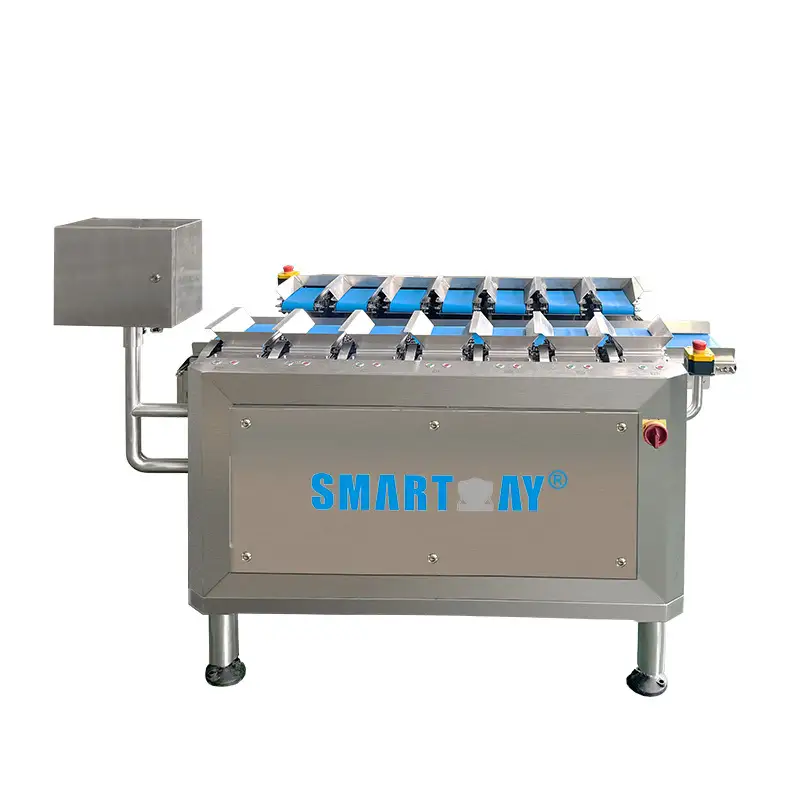Belt-Type Multihead Combination Weighers for Fresh Frozen Salmon Cube Fillet Lump
Belt-type multihead combination weighers are specialized machines designed to handle delicate products like salmon with precision. These systems feature multiple weighing heads (usually between 12 to 18) that use synchronized belts to transport salmon portions into containers.
About Smart Weigh
Smart Package Beyond Expected
Smart Weigh is a global leader in high-precision weighing and integrated packaging systems, trusted by 1,000+ customers and 2,000+ packing lines worldwide. With local support in Indonesia, Europe, USA and UAE, we deliver turnkey packaging line solutions from feeding to palletizing.
Send Your Inqulry
More Choices
Belt-type multihead combination weighers are specialized machines designed to handle delicate products like salmon with precision. These systems feature multiple weighing heads (usually between 12 to 18) that use synchronized belts to transport salmon portions into containers. The main functions of these machines are:

Protecting Product Integrity: The gentle belt system minimizes impact, preserving the texture and appearance of salmon.
Ensuring Accuracy: Multiple load cells work together to provide precise weight measurements.
Enhancing Efficiency: High-speed performance ensures consistent throughput without compromising quality.
Minimizing Giveaway: Smart weight combinations help reduce overfills, cutting costs and boosting profits.
For premium seafood like salmon fillet, maintaining apperance, quality and accuracy is crucial.
Preserving Quality: Vibration can damage delicate salmon. Belt conveyors minimize stress, ensuring the product remains visually appealing.
Regulatory Compliance: Strict portion control and weight accuracy are essential in the seafood industry to meet labeling standards.
Brand Reputation: Consistently accurate portioning builds consumer trust and loyalty.
Operational Efficiency: Automation streamlines production, reducing labor costs while increasing throughput.
Belt-type multihead combination weighers are ideal for various salmon products, including:
Fresh Fillets: Gentle handling prevents breakage.
Smoked Salmon Slices: Maintains slice integrity.
Frozen Portions: Reliable for temperature-sensitive products.
Marinated Cuts: Accurate portioning, even with added sauces.
Bulk Packs for Foodservice: Efficient, large portioning for restaurants and institutions.


A typical belt-type multihead combination weigher consists of several essential components:
● Weighing Heads (Belt): Each head measures the weight of salmon portions using load cells.
● Collect Belt: Conveyors the target weighed salmon to next process.
● Modular Control System: A processor calculates the optimal combination of hoppers to achieve the target weight.
● Touchscreen Interface: Operators can easily monitor and adjust machine settings via the user-friendly interface.
● Hygienic Design: Stainless steel frames and removable belts ensure easy cleaning and meet food safety standards.
| Model | SW-LC12-120 | SW-LC12-150 | SW-LC12-180 |
|---|---|---|---|
| Weighing Head | 12 | ||
| Capacity | 10-1500 grams | ||
| Combine Rate | 10-6000 grams | ||
| Speed | 5-40 packs/min | ||
| Accuracy | ±.0.1-0.3g | ||
| Weigh Belt Size | 220L * 120W mm | 150L * 350W mm | 180L * 350W mm |
| Collating Belt Size | 1350L * 165W mm | 1350L * 380W mm | |
| Control Panel | 9.7" touch screen | ||
| Weighing Method | Load Cell | ||
| Drive System | Stepper motor | ||
| Voltage | 220V, 50/60HZ | ||
The belt weigher operates in several stages:
1. Gentle Feeding: Salmon portions are placed on infeed belts, which move the product toward each weighing head.
2. Individual Weighing: Load cells in each hopper weigh the product.
3. Combination Calculation: The processor analyzes all combinations to find the optimal weight, minimizing giveaway.
4. Product Discharge: The selected portions are released into the packaging line, and the cycle repeats for continuous, precise weighing.
To ensure seamless integration, consider additional support equipment:
Tray Denester: Works together with multihead combination weigher, auto feed the empty trays and conveyor it to the filling station.

Metal Detectors & X-Ray Systems: Detect and remove foreign materials before weighing.
Checkweighers: Verify package weights downstream.
Advantages
● Gentle Handling: Belt feeding minimizes product damage, preserving quality.
● Precision: Intelligent algorithms ensure accurate weight combinations.
● Hygienic: Easy-to-clean construction meets strict sanitation standards.
● High-Speed Operation: Efficient, automated weighing keeps up with high-demand production.
Limitations
● Manual Feeding: Needs workers manual place the product on weighing head belts.
When selecting a belt-type multihead weigher for salmon, keep these factors in mind:
● Production Volume: Choose a model that fits your throughput needs.
● Product Characteristics: Match the weigher’s specifications to your salmon’s size, texture, and moisture content.
● Accuracy and Speed: Ensure the system meets your target weights and production speed.
● Hygiene: Opt for a design that allows for easy cleaning.
● Budget: Consider long-term ROI from reduced giveaway and improved quality.
● Supplier Reputation: Look for experienced manufacturers offering reliable support.
In conclusion, belt-type multihead combination weighers offer a superior solution for accurate, gentle handling of salmon, enhancing both product quality and operational efficiency. By understanding the components, operations, and key considerations, seafood processors can make informed decisions that boost their bottom line while ensuring consumer satisfaction.
Building B, Kunxin Industrial Park, No. 55, Dong Fu Road , Dongfeng Town, Zhongshan City, Guangdong Province, China ,528425
Quick Link
Packing Machine








